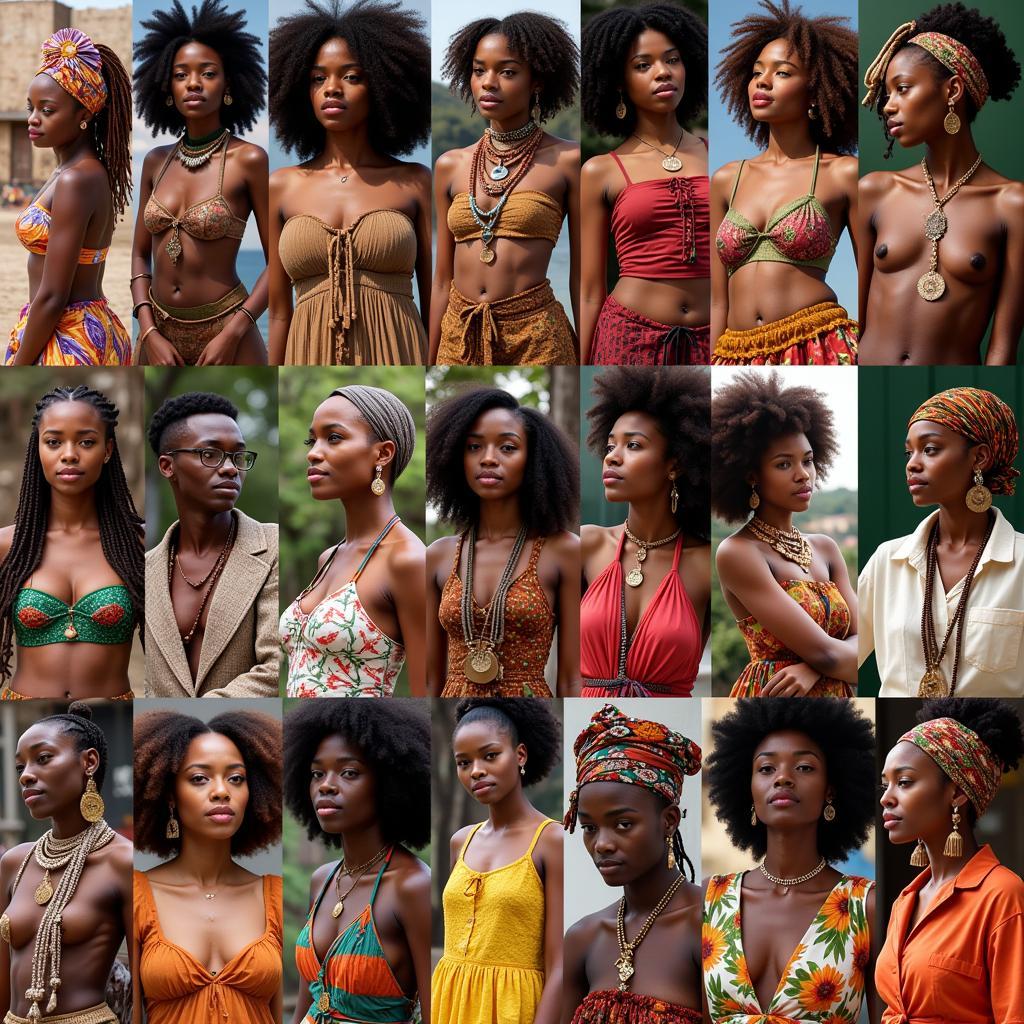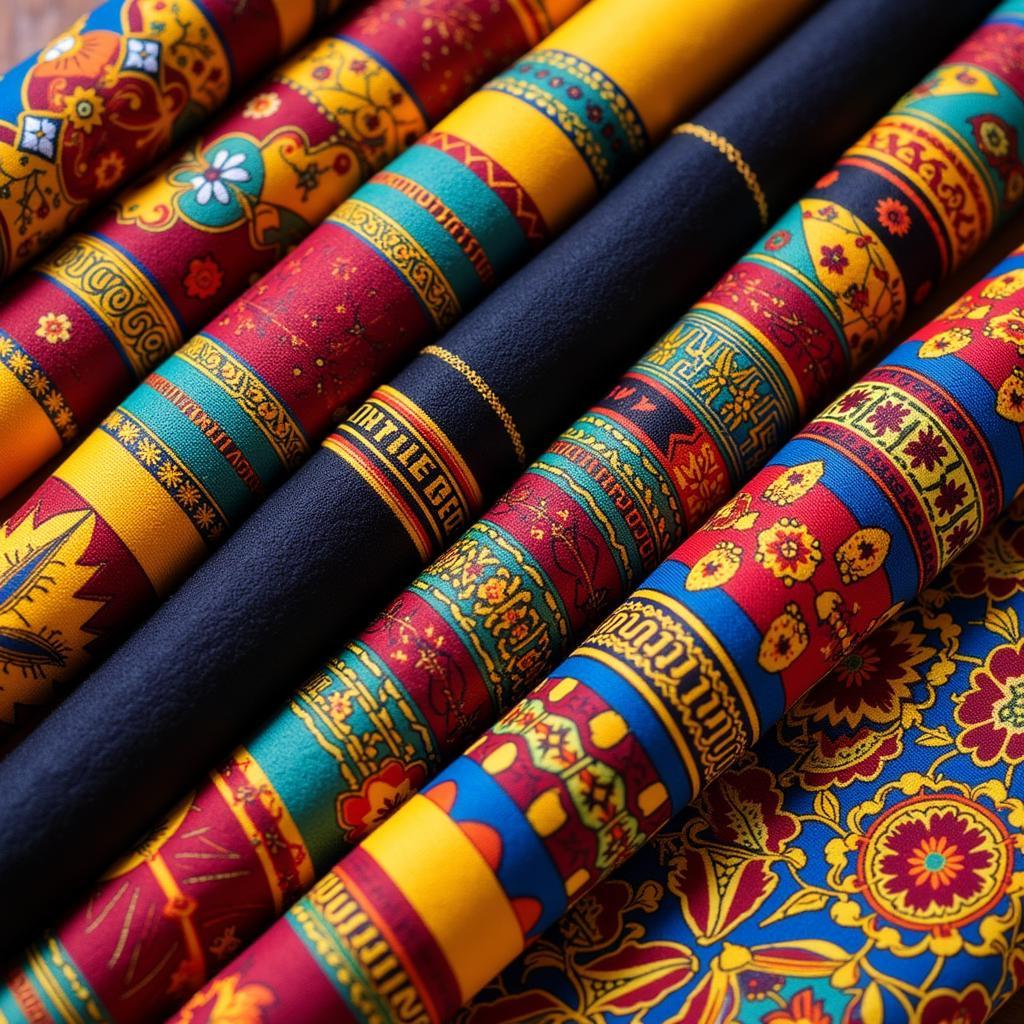Unveiling the Secrets of African Animal Patterns
Africa, a continent teeming with life, is renowned for its diverse wildlife and breathtaking landscapes. Among its many wonders, the intricate patterns adorning the fur, scales, and feathers of African animals stand out as a testament to nature’s artistry. These patterns, far from being random, are crucial for survival, playing vital roles in camouflage, communication, and even thermoregulation.
 African Animals Using Camouflage
African Animals Using Camouflage
The Art of Disappearing: Camouflage and Mimicry
One of the most striking aspects of African Animal Patterns is their role in camouflage. Predators and prey alike have evolved intricate patterns that help them blend seamlessly into their surroundings.
The leopard’s rosette patterns, for instance, break up its outline, making it nearly invisible as it stalks prey in the dappled light of the forest floor. Similarly, the African giraffe baby’s irregular patches of brown and white mimic the play of light and shadow through the trees, providing excellent camouflage against predators.
 Mimicry in African Animals
Mimicry in African Animals
Mimicry takes camouflage a step further. Some animals have evolved patterns that mimic those of other, more dangerous species. For example, the harmless African milk snake, with its alternating bands of black, red, and yellow, bears a striking resemblance to the highly venomous coral snake. This mimicry deters predators, giving the milk snake a survival advantage.
Beyond Camouflage: Communication and Social Signaling
While camouflage is a primary function of many African animal patterns, these intricate designs also play a vital role in communication and social signaling.
The bold stripes of the zebra, long a subject of fascination for scientists, are believed to serve multiple purposes. While they offer some degree of camouflage, their primary function appears to be social. The unique stripe pattern of each zebra allows individuals to recognize each other, and the stripes may also help to confuse predators during a chase.
 Social Signaling in African Animals
Social Signaling in African Animals
Similarly, the vibrant colors and patterns of many African bird species, particularly during mating season, serve to attract mates and establish dominance. The male peacock’s extravagant tail feathers, for instance, are a classic example of how animals use patterns to advertise their fitness and attract potential partners.
Adapting to the Environment: Thermoregulation and More
Beyond camouflage and communication, African animal patterns can also play a role in thermoregulation, helping animals to regulate their body temperature in harsh environments.
The black and white stripes of the zebra, in addition to their social functions, may also help to keep the animals cool. White stripes reflect more sunlight, while black stripes absorb more heat. This creates a convection current of air flow over the zebra’s body, helping to dissipate heat.
A Tapestry of Patterns: Celebrating Africa’s Diversity
The diversity of African animal patterns is a testament to the continent’s incredible biodiversity and the power of natural selection. From the subtle to the flamboyant, these patterns tell stories of survival, adaptation, and the interconnectedness of life on Earth.
By understanding the reasons behind these patterns, we gain a deeper appreciation for the complexities of the natural world and the importance of conserving these magnificent creatures and their habitats.
FAQ
Q: Why do some African animals have spots?
A: Spots can serve various purposes, including camouflage by breaking up an animal’s outline, thermoregulation by reflecting or absorbing heat, and individual recognition within a species.
Q: Are zebra stripes black on white or white on black?
A: Zebras have black stripes on a white background. This is evident in their skin, which is black beneath the white hair.
Q: Do all African animals have patterns?
A: Not all African animals have patterns. Some, like elephants and rhinoceroses, have relatively uniform coloration that provides camouflage in their respective habitats.
Q: How have scientists studied the purpose of animal patterns?
A: Scientists use a variety of methods to study animal patterns, including field observations, experiments with artificial patterns, and computer modeling.
Q: Are African animal patterns threatened by human activities?
A: Yes, habitat loss, fragmentation, and poaching pose significant threats to many African animal species and their unique patterns.
Need help planning your African adventure? Contact us at +255768904061, email kaka.mag@gmail.com, or visit our office in Mbarali DC Mawindi, Kangaga, Tanzania. Our team is available 24/7 to assist you!




